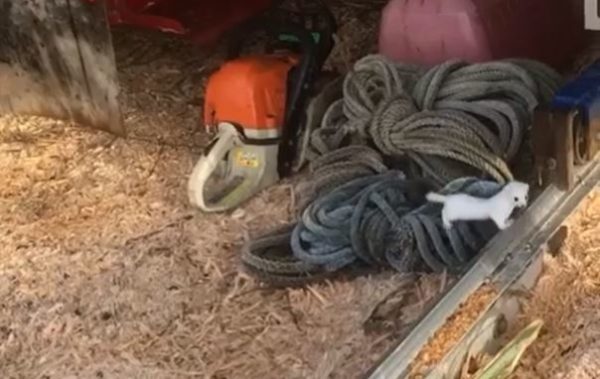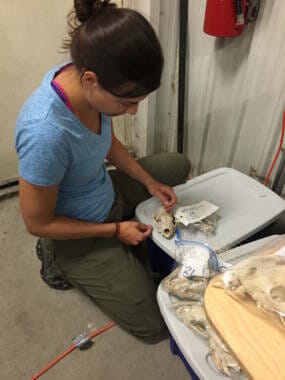
New genetic research is expanding the family tree of a small weasel. A new species has been identified on a Southeast Alaska island and in British Columbia. It’s called the Haida Ermine, and it’s one of three main ermine species in the world. Scientists who studied the mammal believe there could be other animals unique to this area.
When Jocelyn Colella was studying to become an evolutionary biologist, she thought she would research something big — maybe large cats or bears.
“I originally wanted to work on big, charismatic carnivores but there’s a lot of people doing that already,” she said.
So instead, she chose a tiny carnivore, known as the ermine. It’s a small weasel with a mouse-like head, big eyes and a fuzzy brown summer coat that turns white in the winter. Besides being cute, they’re voracious hunters. They feast mainly on mice and voles but can also take down rabbits and chickens.
Colella has studied the small mammal through different universities. She’s now curator of mammals at the University of Kansas Biodiversity Institute.
In the field, she’s studied dozens of ermines.
“I was studying ermine all over. Honestly, it was a Holarctic investigation,” Colella said
With modern science techniques, Colella has also been able to study the ermine’s genome, its genetic makeup. In the lab, she could examine tissue samples that had been collected by scientists all over the world. They had been frozen in vats at minus 196 degrees Celsius.
“Liquid nitrogen cryo vats that are just full of hundreds of thousands of tissues,” said Colella. “And you can say, ‘Well, let’s see what ermine look like from here,’ and you can pull out a piece of tissue and subsample it and sequence its genome.”

Colella compared samples from North America, Asia, and Europe. It took years: She had a lot to work with. The Museum of Southwestern Biology in New Mexico had collected tissues for decades.
Using a computer program, she compared the ermine’s skulls. She found three main species: One in Eurasia, one in North America and one found only on Prince of Wales in Southeast Alaska and Haida Gwaii off the coast of British Columbia.
“Yep, full species, like new species, never-before-recognized mammal,” Colella said.
She studied samples from most of the islands in the region, but none were the same as those found on Prince of Wales and Haida Gwaii. Colella says it’s probably because the islands are located in a place that wasn’t always covered in ice during the glacial periods. She said this ermine may have originated 375,000 years ago.
“These groups were interbreeding, and then this population got stuck on these islands and then a lot of time passed, more ice, and they just slowly became their own species,” Colella said.
Colella believes the Haida ermine probably isn’t the only species specific to the area. She said the island marten — a larger weasel — is showing the same indicators. She said these islands are creating new species because they are isolated with specific environmental conditions.
“We just have no idea what’s out there and we really need to be using these new techniques to better understand the diversity of these islands,” Colella said.
Colella sees the new ermine species as more of a beginning than an end. She said it’s just another example of why people need to look harder at other animals in the area.
“A lot of people think that we know all the mammals that are out there but I think that’s far from the truth,” she said.
Natalie Dawson agrees. As a wildlife biologist she spent 20 years researching mammals on several islands in Southeast Alaska, including weasels.
“I was the first one to take a deep dive on the genetic distribution across many of these different islands comparing between species,” Dawson said.
Colella’s work builds off of Dawson’s research.
Dawson said Prince of Wales Island is a stable environment for a species like the ermine to adapt and agrees there are likely other unique species that just haven’t been identified yet.
“I think what’s significant about it is that in Southeast Alaska, if we’re finding that kind of diversity in mammals, you can imagine how much distinctiveness there probably is in the insects and the plants on each of these islands or even in certain populations on certain islands,” she said.
The study appears in the scientific journal, Diversity and Distributions. Funding for the research came from the National Science Foundation.




